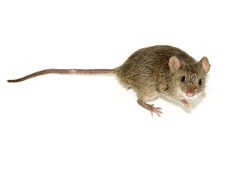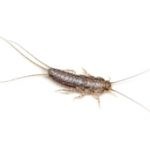Mice UK
In the UK, mice are a common household pest, often seeking shelter in homes, lofts, and commercial buildings. Food contamination, property damage, and health hazards are among the risks they pose. For homeowners, landlords, and business owners alike, it is essential to know how to identify, prevent, and control mice.
Mice are a common issue in UK homes, particularly in colder months. Recognising the early signs of infestations, sealing entry points, and using effective control methods can prevent serious damage. For persistent problems, professional pest control services offer guaranteed solutions.
Different Mice Species You Can Find in The UK
House Mouse (Mus musculus)

These species reach 4 inches (10 cm) in length (nose to base of the tail, the tail can reach up to 4 inches, approximately 10 cm), and have a darker-coloured grey fur. You can distinguish them from young rats by their thin tail, large eyes, and small feet and head.
Image by: Duncan Hull
Yellow Necked Field Mice (Apodemus flavicollis)

The other type of mice you may encounter indoors is the Yellow necked field mice. It has yellow-coloured fur and can reach a little bit over a centimetre without the tail.
Image by: Vojtěch Dostál
UK Mice Feeding Habits
Almost all mice are herbivores. Each species prefer different types of food. While Field mice’s and House mice’s diet consists of fruits and cereal, Yellow necked field mice feed on cables and wood.
Thus, they pose a serious threat as they can cause structural instability or fires due to short circuits. Mice’s diet is mostly dry and they consume less than 3mcgs of water per day.
How Big Do UK Mice Get?
In the UK, the house mouse (Mus musculus) is the most widespread species found indoors. House mice typically grow to 7-10 cm in body length, with a tail of 5-10 cm. They weigh between 12-30 grams. Field mice (wood mice) are slightly larger, growing up to 10-12 cm with a longer tail and weighing around 20-35 grams. Their small size allows them to squeeze through gaps as tiny as 6 mm, making effective proofing essential.
Is It Normal to Have Mice in Your House in the UK?
Are mice common in the UK? Mice infestations are more common in UK homes than many people realise, particularly in urban areas like London, Manchester, and Birmingham. The colder months often drive mice indoors in search of warmth and food, making winter the peak season for infestations. Common signs of mice include:
- Mouse droppings (small, black pellets) in cupboards or near food sources;
- Scratching noises in walls, ceilings, or loft spaces at night;
- Gnawed wires, skirting boards, or food packaging;
- Unpleasant ammonia-like odour from mouse urine;
While one mouse may not indicate a full infestation, mice breed rapidly. A single female can produce up to 60 offspring per year, so early intervention is crucial.
Risk of Mice Infestations in the UK
Mice in the UK pose several risks and hazards to both health and property. Mice can carry and spread diseases such as Salmonella, Leptospirosis, and Hantavirus through their urine, droppings, and saliva.
Mice chew on electrical wires, which can lead to short circuits, fires, or damage to electrical systems. Mice can gnaw on wood, pipes, and other materials, weakening the structure of homes and buildings.
They need to chew on something almost all the time as their teeth never stop growing. Gnawed cables can cause short circuits which result in fire.
Do Council Services Remove Mice in the UK?
Many local councils in the UK offer pest control services, including mice removal. However, the availability, cost, and extent of these services vary from council to council. Some councils offer free or subsidised treatments for residents, while others charge a fee. In many cases, priority is given to council tenants, with private homeowners needing to arrange their own pest control. We offer 24/7 emergency mice removal services in the UK.
Where to Release Mice in the UK?
If using humane mouse traps, it’s important to release mice at least 2-3 miles away from your home to prevent them from returning. in the UK you can release mice in:
- Woodland areas – away from houses and farms.
- Fields and hedgerows – natural food sources available.
- Nature reserves – if permitted by local wildlife guidelines.
Never release mice near other properties or urban areas, as they may infest another home.
How Do Mice Damage Homes in the UK?
- Insulation in-between walls and in the attic: Mice are naturally attracted to insulation because they see it as the perfectly soft material for their nest.
- Upholstered furniture, car seats: Not only will mice damage your furniture by gnawing, but they might also decide to create a nest inside of it.
- Large electrical appliances such as the backside of ovens: Mice are attracted by warmth and it’s not impossible that they settle in your oven.
- Electrical wires: This is the most hazardous kind of mice damage, as it causes power shortages, appliance malfunction and even fires.
- Paper and documents: Mice are known to shred stored paper as a material for their nests.
- Walls: If mice cannot find a hole to sneak into your house through, they will make one on your structural wall.
What to Do in Case of a Mouse Infestation
It’s essential to take action immediately if you suspect your home or business may have a mouse infestation.
Inspect the property for any cracks, holes, or gaps around doors, windows, and pipes. Seal gaps with steel wool, caulk, or weatherstripping. Place mice traps along walls, near droppings, or where you’ve seen activity. Rodenticides can be used, but they should be handled carefully, especially in homes with children or pets. It’s best to leave this option to the UK mice control experts.
Dead mice carcasses around your property are the perfect recipe for a health disaster. Mice traps are effective against a single mouse. It is impossible to battle infestation with traps since young mice are not attracted to the baits.
We only aim to provide some useful information about mice in general. We cannot guarantee that the rodents you’re dealing with corresponds to the same description.
















